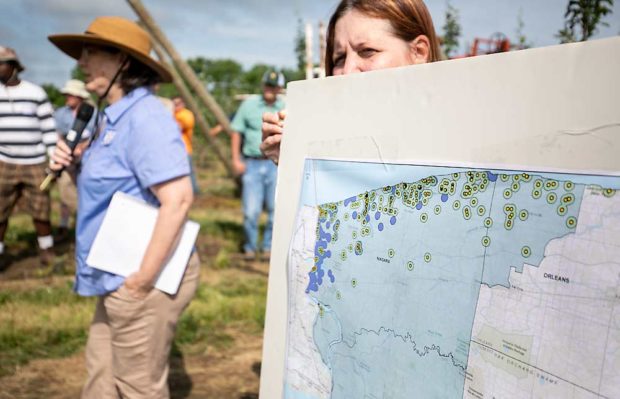
In the midst of cherry harvest, a handful of growers in Western New York received some bad news: picking needed to stop because a quarantine pest had been caught in their orchards.
The U.S. Animal and Plant Health Inspection Service has been monitoring European cherry fruit fly for the past two years, after it was discovered in Niagara County.
A quarantine encompassing Niagara, Erie, and part of Orleans County, an area that contains more than 500 acres of cherry production, was put in place this spring to limit the movement of fresh fruit, but not to prevent harvest.
Officials had hoped that commercial management practices in place to control native cherry fruit flies and spotted wing drosophila would be sufficient to control the invasive fly in commercial blocks. But that has turned out not to be the case, although the vast majority of the trap catch is still coming from wild honeysuckle in unmanaged areas.
“We found it in five commercial orchards where growers are completely on top of their spray programs,” said Margaret Kelly, with the New York State Department of Ag and Markets, at a July 18 field day organized by Cornell Cooperative Extension. “The fact of the matter is that what we are doing right now is not working.”
That’s because with a quarantine pest officials hope to eradicate, one single fly is enough to shut down harvest in a block.
“It’s a mess. We’re living in this terrible moment of cherries that needed to be harvested yesterday and we need to find a way to get it to markets,” Kelly said, adding that the state is trying to work with affected growers to find any solutions possible. “We’re in a tough spot, but we are working very hard to contain it.”
One such grower, Jim Bittner of Appleton, New York, was struggling to find out if his tart cherries could still be harvested for processing into juice concentrate after there was a positive trap catch in his block, despite an aggressive spray program.
After some back and forth with federal regulators, he received the go-ahead for processing, since the steam-treatment was expected to kill any larvae that may be present in the fruit waste.
He also had to shut down one 15-acre block of U-Pick sweet cherries.
“Plans were never really made for what happens if and when we find one,” he said. “This will all be over in two weeks now, but what about next year?”
It’s a frustrating situation because the invasive fruit fly doesn’t appear to be an economic threat to his farm, just a quarantine threat, Bittner said. No infected fruit has been found.
Related: —Old World pest, New World wary —Quarantine in New York’s Niagara County for European cherry fruit fly
—by Kate Prengaman






Leave A Comment